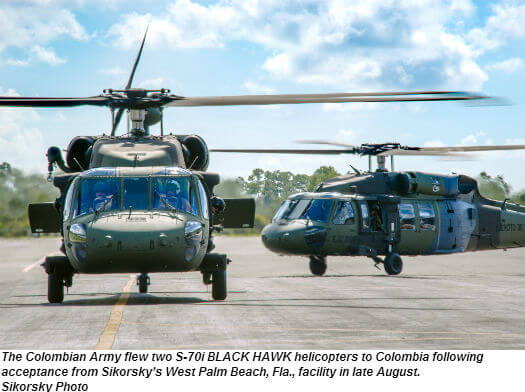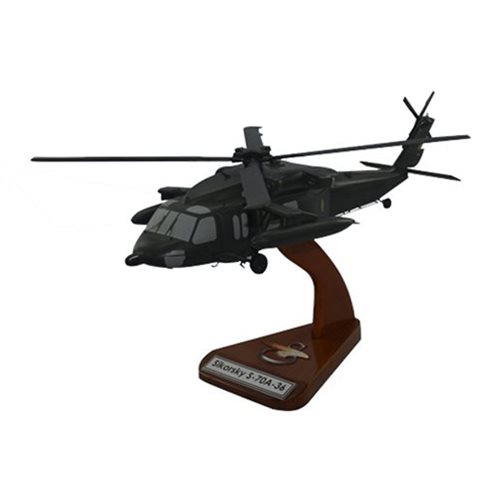Sikorsky S 70: Revolutionizing Tactical Procedures with Cutting-Edge Technology
High-Performance Multi-Role Rotorcraft Featuring Advanced Cabin Technologies and Integrated Sensor Equipments
The realm of rotorcraft technology has seen remarkable developments in recent times, specifically in the world of high-performance multi-role rotorcraft furnished with advanced cockpit technologies and flawlessly incorporated sensor systems. These technologies have not only increased the operational abilities of rotorcraft yet have also substantially impacted modern aeronautics procedures on numerous fronts. From enhanced mission versatility to boosted operational effectiveness, the convergence of advanced cabin technologies and incorporated sensing unit systems has actually ushered in a brand-new era of possibilities for rotorcraft applications. In the complying with conversation, we will check out the advancement of rotorcraft modern technology, explore the world of innovative cabin developments, and examine the implications of integrated sensor systems on the functional adaptability and performance of modern rotorcraft.
Development of Rotorcraft Innovation
The evolution of rotorcraft modern technology has actually been marked by significant improvements in the rules of aerodynamics, products, and propulsion systems, shaping the capacities and efficiency of contemporary rotorcraft. In addition, developments in propulsion systems, including extra effective engines and ingenious propulsion innovations, have made it possible for rotorcraft to achieve greater elevations, faster speeds, and greater payloads.
These developments have not just transformed the capabilities of rotorcraft but have likewise increased their applications across different sectors, including army, industrial, and emergency situation services. The continuous advancement of rotorcraft innovation proceeds to drive innovation in the area, pressing the borders of what is feasible and forming the future of vertical flight.
Advanced Cabin Innovations
Building upon the fundamental improvements in aerodynamics, products, and propulsion systems, the realm of rotorcraft modern technology currently moves emphasis towards pioneering Advanced Cabin Innovations. The integration of innovative innovations within the cabin environment plays an essential role in enhancing the operational capacities, safety, and effectiveness of modern-day rotorcraft. sikorsky s 70. Advanced Cabin Innovations incorporate a wide array of features made to supply pilots with enhanced situational recognition, structured data administration, and instinctive control interfaces
One of the essential innovations in cockpit layout is the application of glass cabins, which change traditional analog assesses with high-resolution displays. These digital systems provide adjustable designs, real-time data combination, and improved readability, making it possible for pilots to gain access to crucial information at a glance. Advanced avionics systems, such as fly-by-wire controls and augmented reality display screens, are changing how pilots communicate with the aircraft, enabling for precise control and improved decision-making capabilities.


Including advanced cabin developments not only improves pilot performance however additionally contributes to overall mission efficiency and safety and security in complicated functional atmospheres. By leveraging state-of-the-art innovations within the cockpit, rotorcraft manufacturers are setting brand-new criteria for operational excellence and goal success.
Integrated Sensing Unit Solutions
With the evolution of rotorcraft innovation, the integration of innovative Integrated Sensing unit Systems has actually come to be critical in boosting functional effectiveness and safety and security. These Integrated Sensing unit Equipments incorporate a large range of innovations that supply crucial information for different features such as navigation, surveillance, targeting, and environmental surveillance. By effortlessly integrating sensors like radars, cameras, lidar, and infrared systems into rotorcraft, drivers can benefit from boosted situational awareness, enhanced objective capabilities, and lowered pilot work.
One trick benefit of Integrated Sensor Systems is their capacity to gather real-time data and give actionable insights to pilots and goal drivers. For instance, progressed radar systems can spot and track targets over long ranges, enabling early hazard detection and efficient response planning. Furthermore, integrating electro-optical and infrared video cameras makes it possible for rotorcraft to perform reconnaissance and security objectives with precision and precision.
In essence, the integration of cutting-edge sensor technologies right into rotorcraft not only improves functional efficiency however additionally contributes dramatically to overall objective success and crew safety and security. As rotorcraft remain to develop, the role of Integrated Sensing unit Equipment will certainly continue to be at the forefront of technology in the aerospace market.
Functional Flexibility and Performance
Enhancing operational flexibility and efficiency in rotorcraft is an all-natural development from the integration of advanced Integrated Sensing unit Solutions. By leveraging the data and insights given by these cutting-edge sensing unit systems, rotorcraft can optimize their performance across various missions and environments.
Functional flexibility encompasses the ability of rotorcraft to adapt to different duties and scenarios effectively. With advanced cabin technologies and integrated sensor systems, rotorcraft can seamlessly change between jobs such as search and rescue, clinical discharge, surveillance, and more. This convenience enhances the rotorcraft's ability to fulfill diverse operational demands without needing substantial reconfiguration.
Efficiency in rotorcraft procedures is essential for maximizing goal efficiency and source usage. Integrated sensor systems play a crucial duty in enhancing operational performance by providing real-time data on climate condition, surface mapping, target tracking, and more. This information allows pilots to make enlightened choices swiftly, optimize flight courses, conserve gas, and boost general objective efficiency.
Impact on Modern Air Travel Operations

Furthermore, the integration of sophisticated sensors assists in boosted objective planning and implementation, making it possible for rotorcraft to execute a wide over here variety of tasks with boosted precision. From search and rescue procedures to airborne firefighting and regulation enforcement objectives, the capacities of modern rotorcraft equipped with innovative cabin technologies and incorporated sensing unit systems are unequaled.
In addition, the influence of these innovations expands beyond functional performance to cost-effectiveness and sustainability. By maximizing trip paths, gas usage, and maintenance routines, high-performance rotorcraft outfitted with sophisticated cabin innovations and sensing units add to minimizing functional prices and environmental influence, making them essential assets in modern aeronautics operations.
Conclusion
In verdict, the high-performance multi-role rotorcraft with sophisticated cabin innovations and incorporated sensor systems represents a substantial advancement in air travel modern technology. These innovations improve operational versatility and efficiency, eventually affecting modern-day aviation operations in a positive way. The integration of these advanced technologies enables improved abilities and performance in various mission scenarios, showcasing the proceeded development of rotorcraft innovation in the aviation sector.
The world of rotorcraft innovation has actually seen remarkable developments in recent times, especially in the realm of high-performance multi-role rotorcraft equipped with cutting-edge cabin innovations and perfectly incorporated sensor systems. From enhanced objective adaptability to enhanced functional efficiency, the convergence of advanced cabin technologies and incorporated sensor systems has actually ushered in a brand-new era of possibilities for rotorcraft applications. In the adhering to discussion, we will certainly check out the advancement of rotorcraft innovation, dig into the realm of check that innovative cabin innovations, and take a look at the effects of integrated sensing unit systems on the operational adaptability and effectiveness of modern rotorcraft.
